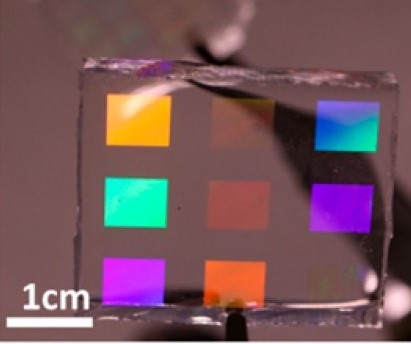Micromachines that can swim through the bloodstream could be a powerful tool to deliver essential medicine. But why design synthetic micromotors when one already exists in biology?
What’s blacker than black?
There’s a new record holder for the world’s blackest material. Learn about how randomly oriented carbon nanotubes can be used to create a coating darker than anything else ever made!
Nanodome architectures lighting our way to sustainable energy!
Ever wondered how researchers are making solar energy conversion more efficient and affordable? In this article, learn about nanoscale architectural designs assisting in trapping and managing light for better solar efficiency!
Plasmonic Stamps: Simple Color Control
Optical electronics are the future of technology. Take a look at how a new printing technique may enable chip scale manipulation of light via gold nanoparticles.
Using lasers to make graphene on the surface of food!
Graphene is a wonder-material that is nearly indestructible, conducts electricity, and flexible enough to be worn. Let’s learn how to make it with lasers on the surface of carbon-based materials!
Popcorn supercapacitors – future batteries for electric cars?
Most people prefer their popcorn popped to perfection, but scientist Jianhua Hou prefers his burnt. How could the smell of burnt popcorn possibly be a good thing? Chembites investigates!
Quantum Dot Lasers: Improving Efficiency with Perovskite Shells
Lasers are cool – everyone who’s seen a sci-fi movie knows that. But we still haven’t figured out how to use them to their full potential in real life. This paper explores some ways to improve the efficiency of quantum dot lasers, which have a myriad of applications in computers to cell imaging.







